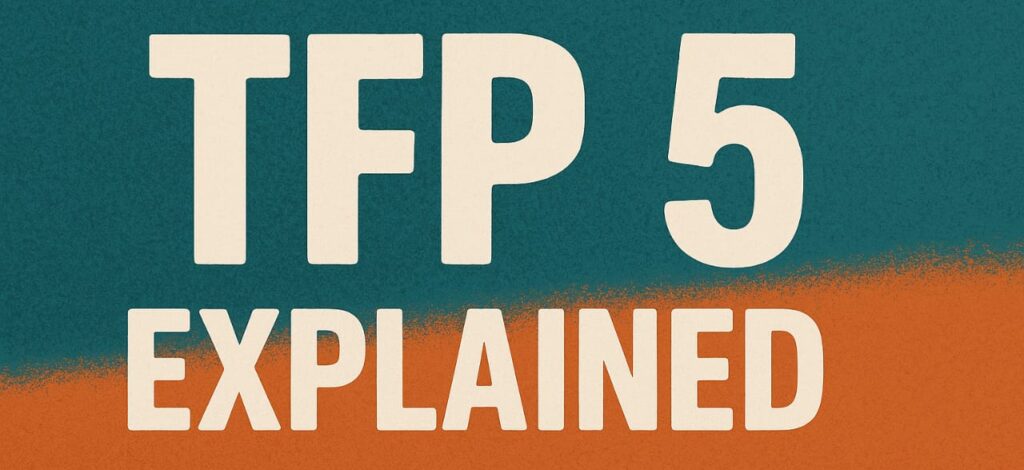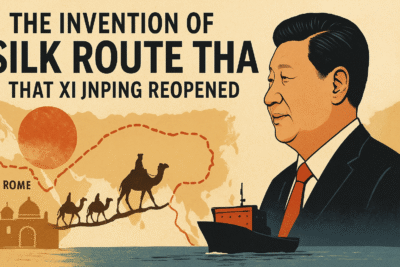
TFP 5 Explained
1.
British stealth jet drama in Kerala: Why is a top-secret F-35 stranded on Indian soil?
Why did the British F-35B jet land in Kerala, and what happened after?
- The British Royal Navy’s F-35B fighter jet made an emergency landing at Thiruvananthapuram International Airport, Kerala, on June 14.
- The aircraft, part of the carrier strike group accompanying HMS Prince of Wales, was on a routine flight outside Indian airspace when it encountered poor weather and ran low on fuel.
- The pilot issued a distress alert, and Indian Air Force command and control authorised an emergency landing at a bay typically reserved for VIP aircraft.
- After landing, the jet developed a hydraulic fault, leaving it stranded on the tarmac for over three weeks despite initial repair attempts by Royal Navy technicians.
What steps have been taken to repair or move the jet?
- On July 6, a Royal Air Force Airbus A400M Atlas brought a team of 24 UK experts, including 14 technical engineers, to Kerala.
- Their mission is to assess whether the F-35B can be repaired locally or if it must be dismantled and transported back to the UK. The jet was towed to a hangar after the UK accepted India’s offer of space at the airport’s Maintenance,
- Repair and Overhaul (MRO) facility. The British team brought specialist equipment for the assessment and repair process.
- The UK High Commission has expressed gratitude for India’s cooperation and logistical support, highlighting the collaborative effort between the two countries.
What this incident tells us?
- The presence of the advanced stealth fighter in Kerala has attracted significant public attention and even inspired a wave of memes and marketing campaigns by local organisations.
- Diplomatically, the incident has showcased operational transparency and cooperation between India and the UK.
- However, there have been sensitivities regarding technology exposure, with British officials reportedly declining offers to move the jet to Indian Air Force MRO centres due to concerns over the F-35’s classified systems.
- The episode has also highlighted the complexities of operating advanced military assets far from home bases and the importance of international protocols for emergency landings and technical support.
2.
India leapfrogs global giants: how did it become the world’s fourth most equal society?
How was India ranked among the world’s most equal countries, and what does this mean?
- According to the World Bank’s latest global income equality report, India has been ranked as the fourth most equal country in the world, surpassing both China and the United States.
- This ranking is based on the Gini coefficient, a widely used measure of income inequality.
- A lower Gini coefficient indicates a more equal distribution of income among a country’s population.
- India’s improvement in this ranking reflects a narrowing of income disparities and suggests greater inclusivity in economic growth.
What factors have contributed to India’s improved equality ranking?
Several factors have played a role in India’s progress:
- Targeted welfare schemes: Government initiatives such as direct benefit transfers, food security programmes, and rural employment schemes have helped lift millions out of poverty and reduce extreme inequality.
- Expansion of social safety nets: The rollout of universal health coverage, subsidised housing, and pension schemes for the elderly and vulnerable populations has contributed to a more even distribution of resources.
- Rising rural incomes: Growth in the agricultural sector, along with rural infrastructure development, has helped reduce the urban-rural income gap.
- Digital inclusion: The widespread adoption of digital payment systems and financial inclusion through schemes like Jan Dhan Yojana has enabled more equitable access to banking and credit.
What challenges remain, and what are the implications for India’s future?
- Despite these gains, challenges such as regional disparities, persistent caste- and gender-based inequalities, and unemployment remain.
- The informal sector still employs a large proportion of the workforce, often with limited social protections.
- Maintaining and building on this progress will require continued investment in education, healthcare, and job creation, as well as policies that address structural inequalities.
- India’s improved equality ranking enhances its global image and could attract greater foreign investment, but sustained efforts are needed to ensure that growth remains inclusive and benefits all sections of society.
3.
Assam’s border crackdown: what’s behind the latest deportation of Bangladeshis?
Why did Assam deport 18 undocumented Bangladeshi nationals?
- On July 7, Assam authorities deported 18 undocumented Bangladeshi nationals as part of an ongoing crackdown on illegal immigration.
- This action is part of Assam’s broader efforts to address concerns about demographic changes, border security, and resource pressures attributed to undocumented migration from neighbouring Bangladesh.
- The deportees were apprehended during routine checks and investigations by the state police and border security agencies.
How does Assam identify and process undocumented migrants?
- Assam employs a combination of police verification, border surveillance, and documentation checks to identify undocumented migrants.
- The state maintains a National Register of Citizens (NRC) to distinguish legal residents from those who entered the country illegally.
- Once individuals are identified as undocumented, their cases are reviewed by Foreigners’ Tribunals, quasi-judicial bodies that determine their status.
- Those found to be in India illegally are detained in holding centres before being deported in coordination with Bangladeshi authorities.
What are the implications of these deportations for Assam and the region?
- The deportation of undocumented migrants is a sensitive issue in Assam, which has a long history of tensions over migration from Bangladesh.
- Supporters argue that strict enforcement protects local jobs, resources, and cultural identity, while critics raise concerns about human rights and the risk of wrongful detention or statelessness.
- The Indian and Bangladeshi governments coordinate on such deportations to ensure due process and avoid diplomatic friction.
- The issue remains politically charged, with ongoing debates over the NRC, citizenship laws, and the treatment of minorities and vulnerable groups.
4.
Banking on jobs: Why are India’s public sector banks hiring at record levels?
Why are public sector banks in India planning to hire 50,000 employees this year?
- India’s public sector banks (PSBs) have announced a major recruitment drive to hire 50,000 new employees in 2025.
- This move is aimed at addressing workforce shortages caused by retirements, supporting branch expansion, and enhancing customer service as banks modernise and digitise operations.
- The banking sector is also responding to increased demand for financial services, particularly in rural and semi-urban areas, as the government pushes for greater financial inclusion.
What roles will these new hires fill, and how will recruitment be conducted?
- The recruitment will cover a range of positions, including clerks, probationary officers, specialist officers (such as IT, risk management, and agriculture officers), and support staff. Selection will be conducted through competitive examinations administered by the Institute of Banking Personnel Selection (IBPS) and individual bank recruitment boards.
- The process typically involves preliminary and main written exams, followed by interviews and document verification.
- The expansion of digital banking services has also created demand for technology and cybersecurity professionals.
What impact will this hiring drive have on the banking sector and job market?
The large-scale recruitment is expected to:
- Improve service delivery by reducing staff shortages and enhancing customer experience.
- Support financial inclusion by enabling banks to open new branches in underserved areas.
- Boost employment for young graduates and professionals, providing stable, well-paying jobs in the public sector.
- Facilitate digital transformation by bringing in new talent with skills in technology and innovation.
However, challenges such as training new recruits, managing costs, and integrating technology with traditional banking will require careful management.
- The initiative reflects the government’s commitment to strengthening the public banking system and supporting economic growth through job creation.
5.
Supreme Court draws the line: Ex-CJI Chandrachud told to vacate govt bungalow
What led the Supreme Court to order a former Chief Justice of India Chandrachud to vacate his official residence?
- The Supreme Court of India directed a former Chief Justice of India (CJI) to vacate his official government bungalow, which he continued to occupy after his retirement.
- The court’s order followed a public interest litigation and government representations highlighting the need for former officials to relinquish official residences in a timely manner to ensure fair allocation of government housing.
What are the rules regarding official residences for former judges and officials?
- Under government guidelines, serving judges and top officials are entitled to official accommodation for the duration of their tenure, with a grace period after retirement (typically one to three months) to facilitate their transition.
- Continued occupation beyond this period is not permitted, as it can delay the allocation of housing to serving officials and create administrative bottlenecks.
- The Supreme Court’s intervention underscores the importance of adhering to these rules and maintaining accountability among public servants.
What are the broader implications of this order for public administration?
- The court’s directive reinforces the principle of equal treatment and the rule of law, sending a message that even the highest judicial authorities must comply with regulations.
- It also reflects growing public scrutiny of privileges enjoyed by former officials and the need for transparency in the allocation of government resources.
- The decision is likely to prompt stricter enforcement of housing rules and may lead to similar actions against other retired officials who overstay in government accommodation.
- This move is seen as part of broader efforts to promote good governance and ensure efficient use of public assets.





